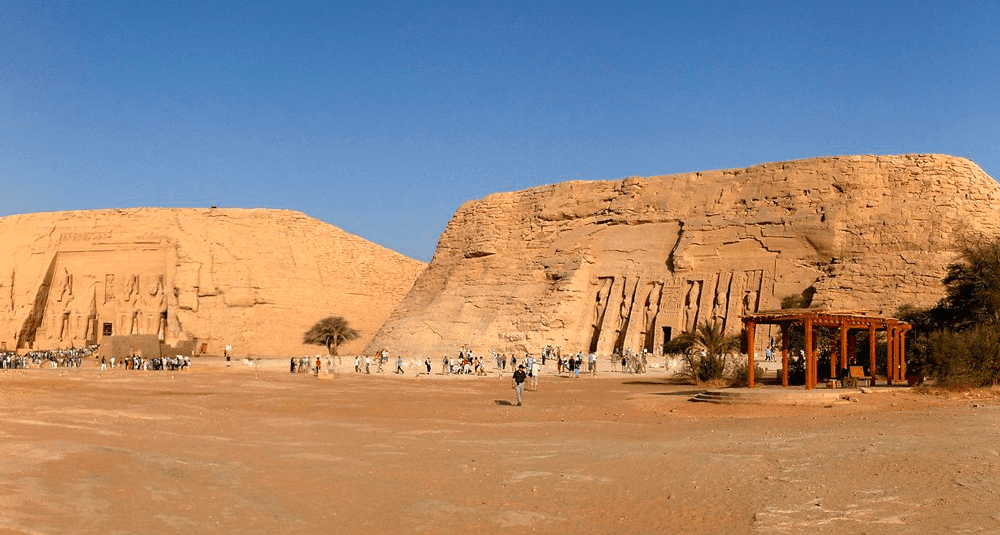Where are the Abu Simbel Temples located?
Last Updated:
The Abu Simbel temples in Egypt are one of the country’s most impressive archaeological sites. They were built in the 13th century BC, during the reign of Ramses II, one of the most famous pharaohs of ancient Egypt. They are located in the south of the country, near Lake Nasser, not far from the border with Sudan, and form part of the Nubian monument complex, a historic territory stretching between Egypt and Sudan.
Abu Simbel is home to two temples carved directly into the rock. The larger, dedicated to Pharaoh Ramses II himself, is adorned with four colossal statues of the pharaoh, each around 20 metres high. These statues are arranged to impress visitors and underline the divine and royal power of Ramses II. Inside the temple, battle scenes, including that of Kadesh, recall the pharaoh’s military exploits.
The second, smaller but equally remarkable temple is dedicated to Nefertari, the beloved wife of Ramesses II. This temple is also decorated with imposing statues of Ramses and Nefertari, illustrating the pharaoh’s devotion to his queen.
Abu Simbel is also remarkable for the monumental rescue it underwent in the 1960s. As the construction of the Aswan Dam threatened to engulf the temples beneath the waters of Lake Nasser, an international operation, coordinated by UNESCO, was launched to relocate the temples to an artificial hill 65 metres higher up. This titanic project, which lasted from 1964 to 1968, made it possible to preserve this priceless ancient Egyptian heritage. The temples were cut into blocks weighing several tonnes, then reassembled piece by piece in their new location.
Today, Abu Simbel is one of Egypt’s most visited tourist attractions. Visitors come from all over the world to admire the sheer scale of the statues, the precision of the bas-reliefs and to discover the fascinating story of Ramses II. The temples are particularly famous for a phenomenon that occurs twice a year, on February 22 and October 22, when the sun’s rays enter the main sanctuary and illuminate the statues inside the Temple of Ramses II, with the exception of that of the god Ptah, which is associated with darkness.
The Abu Simbel temples in Egypt are Pharaonic monuments of great historical, cultural and architectural significance. They bear witness to the greatness of Ramses II and his desire to leave his mark on history with majestic constructions, while also symbolizing humanity’s progress in heritage preservation thanks to their spectacular relocation in the 1960s. These temples remain one of the most enduring symbols of ancient Egyptian civilization.
geography

Where are the Abu Simbel Temples located?
Answer
The Abu Simbel temples are located in Egypt, near Lake Nasser, and are famous for the monumental statues erected by Ramses II.